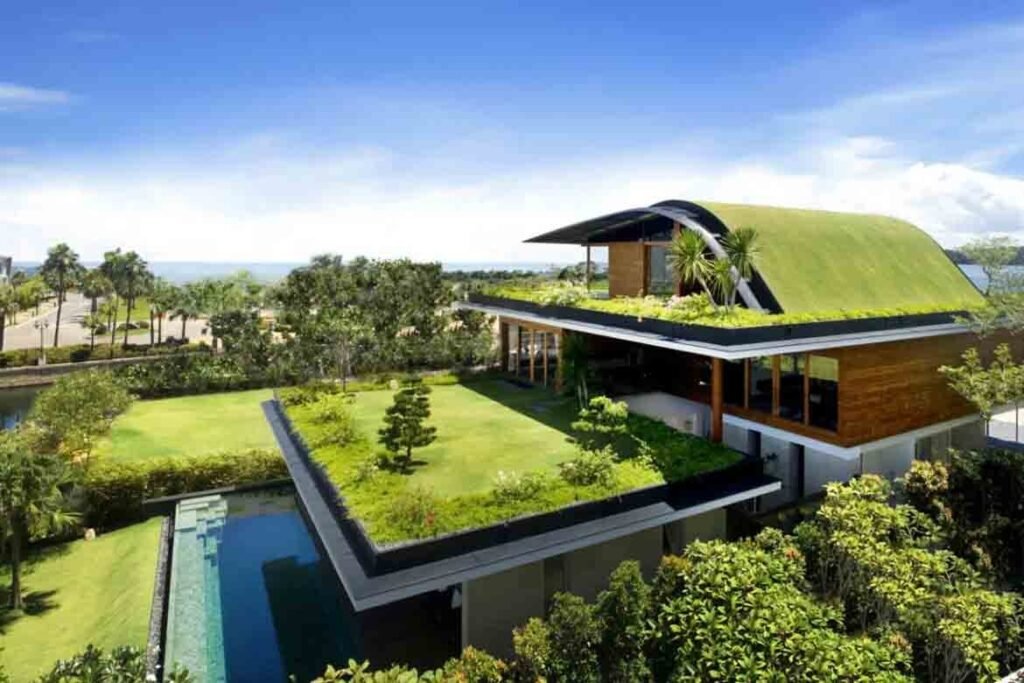Your basket is currently empty!
The Future of Sustainable Architecture: Designs for Eco-Friendly Homes
In an era marked by growing environmental concerns, the need for sustainable architecture has become paramount. As we strive to mitigate the impact of climate change and preserve our planet, architects are embracing innovative designs that prioritize eco-friendliness. This article explores the future of sustainable architecture, focusing on the emerging trends and designs for creating truly eco-friendly homes.

Embracing Renewable Energy: The Key to Energy-Efficient Homes
Renewable energy sources, such as solar and wind power, are revolutionizing the way we power our homes. Architects are incorporating cutting-edge technologies like solar panels, geothermal heating systems, and smart grid integration to maximize energy efficiency. By harnessing the power of nature, these designs reduce reliance on fossil fuels and significantly decrease carbon footprints.
Passive Design: Creating Homes in Harmony with the Environment
Passive design principles aim to create homes that work with the natural environment, rather than against it. By strategically orienting buildings, utilizing natural ventilation, and optimizing insulation, architects can minimize the need for artificial heating and cooling. This not only reduces energy consumption but also enhances comfort and indoor air quality.
Green Roofs and Living Walls: Bringing Nature to Urban Dwellings
To counteract the loss of green spaces in urban areas, architects are incorporating green roofs and living walls into their designs. These features provide numerous benefits, including improved air quality, enhanced insulation, and stormwater management. Moreover, they create visually appealing environments, promoting a sense of well-being and connection with nature.
Recycled and Reclaimed Materials: Sustainability through Resourcefulness
Innovative architects are exploring the use of recycled and reclaimed materials to construct eco-friendly homes. From reclaimed wood to recycled plastic and repurposed metals, these materials reduce waste and minimize the extraction of new resources. Furthermore, they add character and uniqueness to architectural designs, showcasing the beauty of resourcefulness.
Smart Home Technology: Enhancing Energy Management and Efficiency
The integration of smart home technology enables homeowners to monitor and control energy usage with ease. Energy management systems, automated lighting, and smart appliances contribute to reducing energy waste. Additionally, smart technology optimizes comfort, security, and convenience, ensuring sustainable living without sacrificing modern amenities.
Biophilic Design: Fostering a Connection with Nature
Biophilic design aims to create environments that nurture a deep connection with nature. Incorporating elements such as natural lighting, indoor plants, and water features, architects enhance occupants’ well-being and productivity. This design approach promotes sustainable living by instilling a sense of responsibility towards the environment.
Vertical Gardens: Greening High-Rise Buildings
As urban populations continue to grow, architects are finding innovative ways to integrate greenery into high-rise buildings. Vertical gardens not only improve air quality and reduce the urban heat island effect but also provide green spaces for residents to relax and connect with nature. These gardens transform concrete jungles into sustainable living environments.
The future of sustainable architecture is bright, as architects continue to push boundaries and prioritize eco-friendly designs. From embracing renewable energy and passive design principles to incorporating green roofs and reclaimed materials, the possibilities for creating eco-friendly homes are expanding. By adopting these innovative approaches, we can shape a sustainable future that harmonizes with the environment while providing comfortable and beautiful living spaces.
Leave a Reply